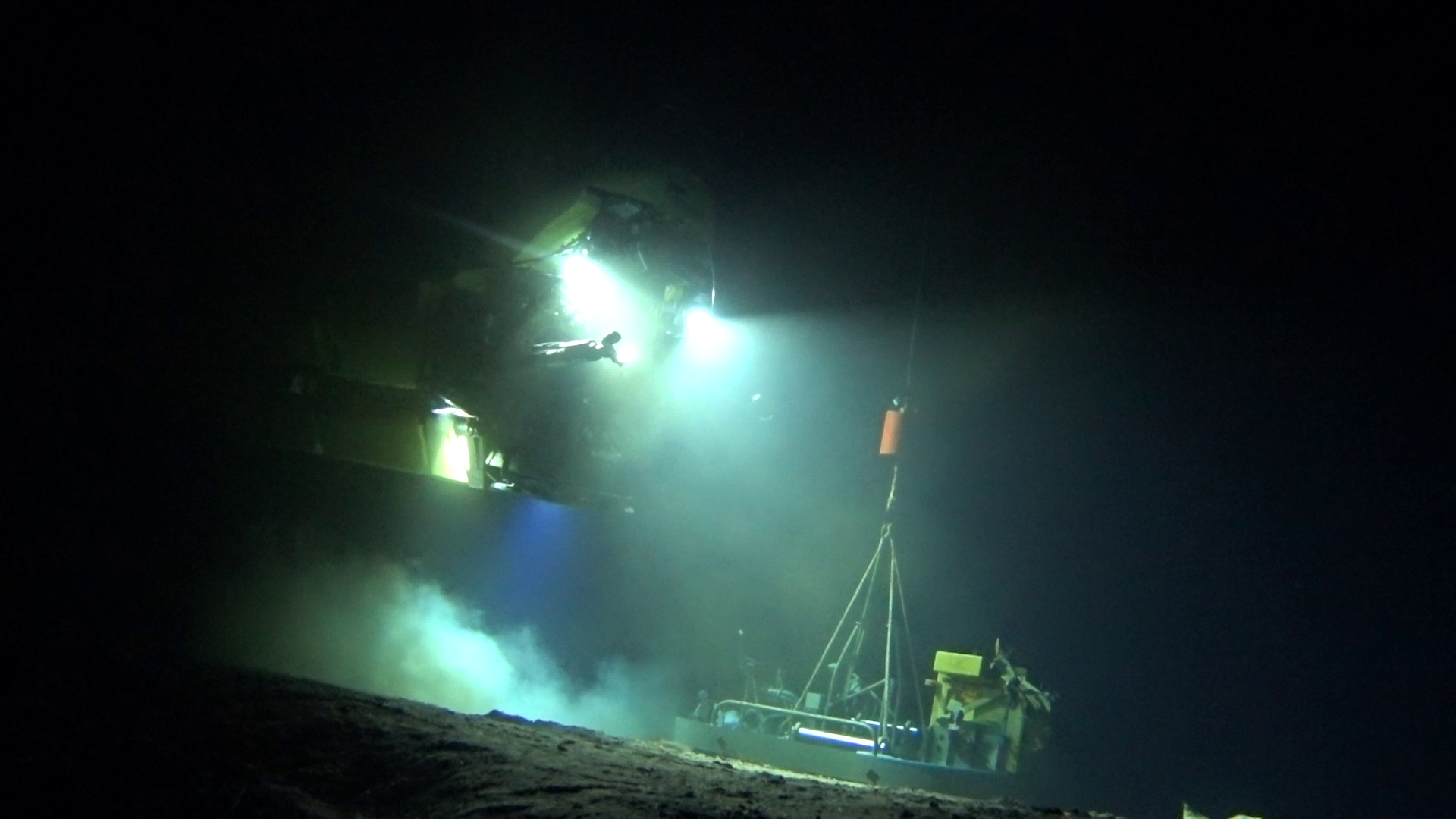The Momarsat 2025 cruise main objective was to maintain the EMSO-Azores observatory (https://www.emso-fr.org/Azores), which has been in place for 15 years. The cruise took place aboard the research vessel L’Atalante with the Nautile Human Operated Vehicle (HOV), from August 12 to September 4, 2025. A total of 30 scientists, including the Nautile team, participated alongside 30 crew members. A particularly fruitful mission, marked by 18 Nautile dives, numerous CTD profiles, the recovery of deep-sea seismometers as well as multibeam echo sounder and shipboard profiles.
The EMSO-Azores observatory is located along the mid-Atlantic ridge, atop an active volcano that hosts Lucky Strike, one of the largest active hydrothermal vent fields. It is dedicated to the integrated study of slow-spreading mid-ocean ridge processes, spanning from the subseafloor to the overlying water column. Its main scientific goals are to investigate: (1) hydrothermal heat and chemical fluxes released into the ocean in relation to seismicity, volcanic activity, and ground deformation at a divergent plate boundary; (2) the influence of telluric, climatic, and human-induced changes on deep-seafloor ecosystems and vent faunal communities; and (3) the dynamics of water masses shaped by the steep axial valley topography, including their role in dispersing hydrothermal plumes and organisms.
To meet these objectives, provide ground truth data to sensors and complement the observatory data, a series of annual operations were carried out, including fluid and microbial/faunal sampling, seafloor experiments, autonomous sensor deployments, optical imagery acquisition and physico-chemical characterization of habitats. This year we also gathered 1,5 tons of dead weights in a dedicated dumpster that will be recovered next year!
The cruise logbook, illustrated with superb photos of life on board and the seabed (down to 1,700 meters), is available here: https://www.facebook.com/CampagneMomarsat/
See you next year, mid-August for the next one!
Photo: The Nautile working on the Seamon East station at 1700 m depth. Credit: Ifremer, Momarsat 2025/Nautile
Authors: Sarrazin Jozée & Matabos Marjolaine, Deep-Sea Lab, BEEP, Ifremer


